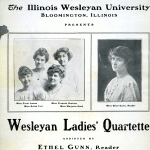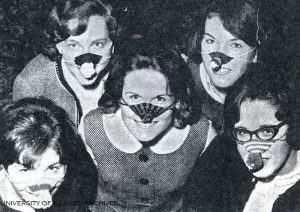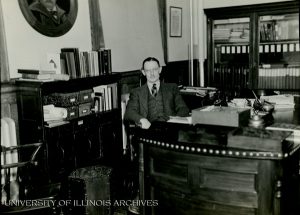Written by Leanna Barcelona
Recently, the Student Life and Culture Archives processed the family papers of Charles E. Keck and his sister, Marjorie Keck Koehler. Growing up, they moved around in Central Illinois along with their father and uncles’ furniture store, Keck Furniture. Each spent time at the University of Illinois and Illinois Wesleyan and were involved extensively in campus life.

Marguerite Aileen Keck was born on October 28, 1891 in Decatur, IL, and received her Bachelor’s degree in Music from Illinois Wesleyan in 1915. Marjorie spent a great deal of time performing in musicals and singing at various events. She formed the “Wesleyan Ladies’ Quartette” with friends and they sang at several events, including the Firemen’s Benefit in 1914, as well as church services. She played the role of “Property Woman” in “Contrary Mary” under the direction of Miss Winifred Kates on December 17, 1914. Aside from her musical talents, Marjorie was a straight “A” student and studied French, Italian, and Latin, and petitioned the founding of Pi Delta Phi Sorority, an organization that is now known as a National French Honors Society. In Marjorie’s personal scrapbook pages, a newspaper clipping reads, “Members of the Pi Delta Phi Sorority were pleasantly entertained Thursday night at a slumber part at the home of Miss Margaret Keck.”[1]


